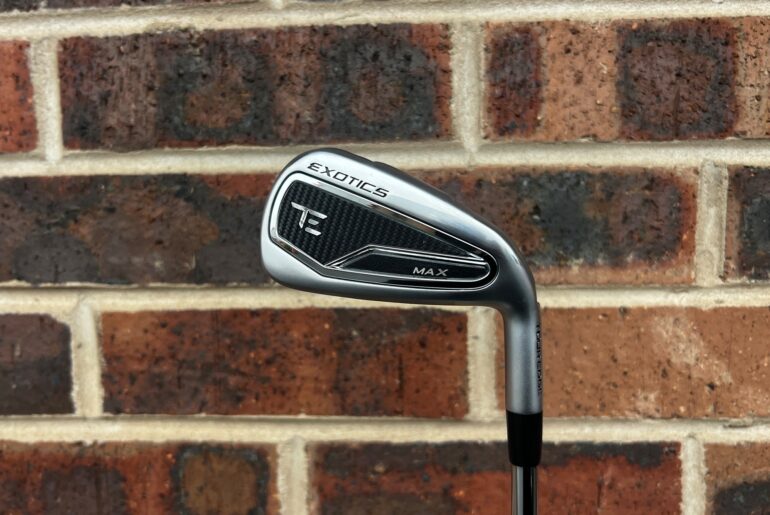There’s a problem with launch monitors. The best launch monitors – and we’ve tested a lot of them – are absolutely fantastic for so many reasons, but we do have an issue with a certain number that they all display.
And this problem is so big and so “dangerous for golfers” that Golf Monthly’s Kick Point hosts, Dan Parker and Joe Ferguson, have dedicated a whole 10 minutes to it in one of the latest podcasts (watch in full below).
This episode is not to be missed, especially if you’re a beginner, because you could be making this game a lot more difficult than it is already.
Best picks for you
WATCH: Dan and Joe from Kick Point: The Golf Gear Show discuss the issues surrounding total distance measurements (from 19:18)
Dan and Joe might not always agree on everything, but when it comes to total distance, both believe that this number is near “pointless” at best.
Total distance. It’s the number that a lot of us are guilty of gravitating towards when we’re at the range or on a launch monitor because, basically, it’s a nice big number and many mistakenly assume this is what we should be taking note of.
If someone asked you how far you hit your 7-iron, what are you going to tell them?
A lot of golfers – and again, especially those who are new to the game – go by the total distance. Not good.
“I see why launch monitors have it, because they want to give an overall projection of where the ball might end up,” says Joe, a former playing professional and custom fitter.
Launch monitors are clever. Very clever. They’ll generally use the descent angle, what angle the ball is going into the ground, how much spin it has, and how much ball speed there is at that point to predict how much further the ball will travel.

(Image credit: Getty Images)
Granted, thanks to the quality of hardware and software that goes into producing these devices, the prediction is pretty darn accurate. So, while total distance is a nice number to keep an eye on and is useful in some scenarios, it certainly isn’t a number amateur golfers should prioritise.
At this point, Joe picks on his dad, although Ferguson Senior probably represents about 70% (a bit more guesswork there) of recreational golfers.
Let’s say Joe’s dad has been down the range and Toptracer (or whatever technology he’s using) tells him his 7-iron has travelled 150 yards.
The next day, Ferguson Snr is playing a par-3 in a competition that measures 150 yards to the pin – so he pulls out his 7-iron.
There’s a deep bunker in front of the green. What happens? Yep, you guessed it, he dumps his ball into the face – and walks off with a six.
This will be happening everywhere, simply because a lot of golfers focus on total distance.
“Not a single elite-level player operates with total distance,” explains Joe.
CARRY, CARRY, CARRY

(Image credit: Future)
What number, then, should golfers be paying attention to, if not total distance? Simple: carry distance.
When you’re next watching the golf, listen to the conversations between player and caddie.
All players want to know – pretty much prior to every shot they hit – is how far they need to carry the golf ball.
Take the recent Ryder Cup for example, where Bethpage was playing like a pudding, and it was nigh on impossible to take spin off the ball.
If a player had 100 yards to the pin, a lot of the time they’d have been hitting their 110-yard shot because they knew it would pull back 10 yards or so.
Conditions at somewhere like, say, Pinehurst, are always going to be very different – firm and bouncy whereby you’d need to hit a shot short and allow for the ball to hop forward a touch.
Again, this stresses the importance of knowing the total carry distance, and then doing your homework on what the ball will do once it hits the ground.
As a former professional competing on various tours, Joe says it would be standard practice in warm-up rounds for players and caddies to pace distances between where a ball landed and where it finished to help them with strategy.
For example, let’s say you’re trying to work out if you can reach a bunker on the corner of a dog leg.
You know you carry your driver 290 yards and the bunker is at 320. It’s your responsibility to know from the practice ground and from previous drives whether that bunker is in play.
It’s not exactly rocket science, but it’s incredible how many recreational golfers get fixated on total distance.
WHAT IF I USE SENSORS IN MY CLUBS?

(Image credit: Howard Boylan)
Dan’s worried now, because he uses tags in his golf clubs. If you use Arccos, Shot Scope, Garmin or any sensors that use distance measuring technology, there’s a fair chance you’re getting presented with total distance yardages.
This is because the technology works by tracking a shot from point to point. It doesn’t know what the conditions on the course are like, whether it’s soft or firm, whether there’s a helping wind or whether you pitched into an upslope.
What you get is just an average total distance. Of course, this does have its uses. For example, take the longest total distance drive you’ve ever recorded and note that down. If the front of the fairway bunker sits at 265 yards away, but your longest ever total drive was 255, yards you know that bunker is out of reach even on your best day.
While not ideal to really get a measure of your carry numbers, these distance-measuring tags are incredibly useful to better understand other parts of your game, such as up-and-down percentages, fairways hit, where your typical miss is, and other Strokes Gained measurements.
WHAT’S THE ANSWER?

If carry numbers are what you need, how do you go about getting those? Unfortunately, it’s not always quite as simple as going down to your local driving range.
Some facilities will have a couple of cameras installed that do a fairly decent job of ball tracking, but you want better than decent – and you absolutely must hit your own golf balls, not range ones.
So, here’s the answer.
Firstly, borrow a launch monitor and go to the practice round with the balls you play, so it’s relevant.
Then, go through the process of hitting every club in the bag (after a warm-up, of course), making a note of the carry number for at least half a dozen good strikes for each one. Finally, work out your average.
Remember, these numbers are likely to change from winter to summer, as the core doesn’t react the same when the ball is freezing (golf balls travel further when it’s warm) – so it’s an exercise worth repeating at least a couple of times over the course of the season.
Maybe it’s not so easy for you to just borrow a launch monitor, so speak to your local PGA professional.
Spend $50 or so on a session with your pro – just working on your carry numbers and nothing else (not even swing mechanics) – and your game/course management will improve massively.







